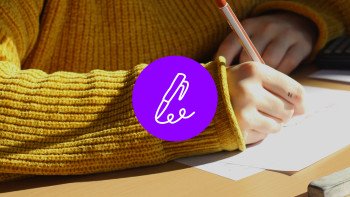The Tower of London
The Tower of London, one of the most popular attractions of London.
Built in 1066 by William the Conquerer, after his battle in Hastings. This means that the Tower is one of the oldest buildings in London. The Tower was meant to be a fortress, to watch over the people.
After a while it became the royal residence of the King. But it didn’t stay the way it was. William the Conquerer didn’t built the whole Tower at once. He only built the White Tower, the centre of the Tower now. So the later kings built other parts around the White Tower, and the Tower started to grow. There was a moat that surrounded the castle walls. Now there’s still a moat but without water. The Tower contains thirteen towers at the inner court. The best known is the Bloody Tower. The outer court contains six towers and two bastions.
When the royal family moved to a new palace in the 17th century, the Tower was used as a prison and a execution place. About a hundred of people lost their life caused by tortures or executions. Even famous persons were executed here. Sir William Wallace, Sir Thomas Moore, Elisabeth I (She was imprisoned, but released afterwards), Anne Boleyn, … .
Now the Tower is used as a museum, you can admire the Crown Jewels or the Bloody Tower where several persons lost their head (Not figurative!). The last prisoner that staid in the Tower was a German spy during World War II. He was also the last person that was executed in the Tower.
The royal family had a personal guard. They were named Yeomen Warders or “Beefeaters”, this name was given to them because, and this is just a legend, they were paid in beef in stead of money the 16th - 17th century. The logical explanation is that it is a corruption of a French term called ‘buffetier’. The Yeomen Warders are still at the Tower, even when the royal family left the Tower. They staid there and are now the guides and protectors of the Crown Jewels.
But not only the guard was fed with meat. The ravens at the Tower are the basis of a legend. ”When the ravens leave the Tower, England will fall”. So to keep that from happening they are fed every day. There is even an special Yeoman Warder to feed them and cut there wings. They call him the Yeoman Warder Ravenmaster, but mostly it’s just Ravenmaster. Why are the ravens there? Well there is a logical explanation for it. When the executions took place at the innercourt of the Tower the ravens flew down and ate some parts of the executed. But at a certain moment there was an execution almost every day, so the ravens stayed at the Tower.
Some parts of the castle have particular names.
Such as:
Traitors Gate: The original name of Traitors Gate was the Water Gate, but they’ve changed it into Traitors Gate when they brought in all the enemies of the Crown. Also important persons came trough this gate. One of these persons was Princess Elizabeth.
Chapel of St. John: This chapel can be found in the White Tower on the first floor.
The White Tower: This is the oldest part of the whole Tower. It was the first building built by William the Conquerer. The White Tower wasn’t white at all. Because there was no drain-pipe or something like it, the outer outer wall was rather green-brown. So Henry III gave order to make it white. They’ve plastered the walls. And you can still see the White Tower in white.
Tower Hill
The Tower Hill was used as a execution place for the prisoners. Most of the time for non-royal prisoners. The royal prisoners were executed in the Bloody Tower.
The Crown Jewels
The Crowns.
There are several crowns. The St. Edward’s Crown, the Imperial State Crown, the Imperial Crown of India and the George IV state Diadem.
St. Edward’s Crown
This Crown was made in 1661. The design was a four crosses pattée and two arches on top of it. the crown was made out of gold and contains 444 precious stones.
The Imperial state Crown
Made in 1937. King George VI gave the order to make a crown similar to Queen Victoria’s Crown. The crown includes many jewels: 2868 diamonds ( the most famous diamond is the Lesser Star of Africa), 273 pearls, 17 sapphires, 11 emeralds and 5 rubies.
The Imperial Crown of India
Made by King George V when he visited India, as Emperor of India. The crown contains 6000 diamonds.
The Orb and Sceptre
The Sceptre with the Cross was made in 1661, and is so called because it is surmounted by a cross. In 1905, it was redesigned to incorporate the Cullinan I, also known as the Great Star of Africa, which at over 530 carats (106 g) is the second largest cut diamond in the world after The Golden Jubilee. During the coronation, the monarch bears the Sceptre with the Cross in the right hand.
The Sceptre with the Dove was also made in 1661, and on top is a dove symbolising the Holy Ghost. While the Sceptre with the Cross is borne in the right hand, the Sceptre with the Dove is borne in the left. At the same time as the Sovereign holds both Sceptres, he or she is crowned with St. Edward's Crown.
The Sovereign's Orb, a type of globus cruciger, is a hollow golden sphere made in 1661. There is a band of jewels running along the centre, and a half-band on the top hemisphere. Surmounting the orb is a jewelled Cross representing the Sovereign's role as Defender of the Faith. For a part of the coronation, it is borne in the Sovereign's left hand.
De spreekbeurt gaat verder na deze boodschap.
Verder lezen










REACTIES
1 seconde geleden
L.
L.
hee, heel mooi gedaan, hier moet ik zelf ook een werkstuk voor maken binnenkort. bij je niveau staat aso, wat is dat?
14 jaar geleden
AntwoordenM.
M.
erg goed gedaan.
10 jaar geleden
Antwoorden